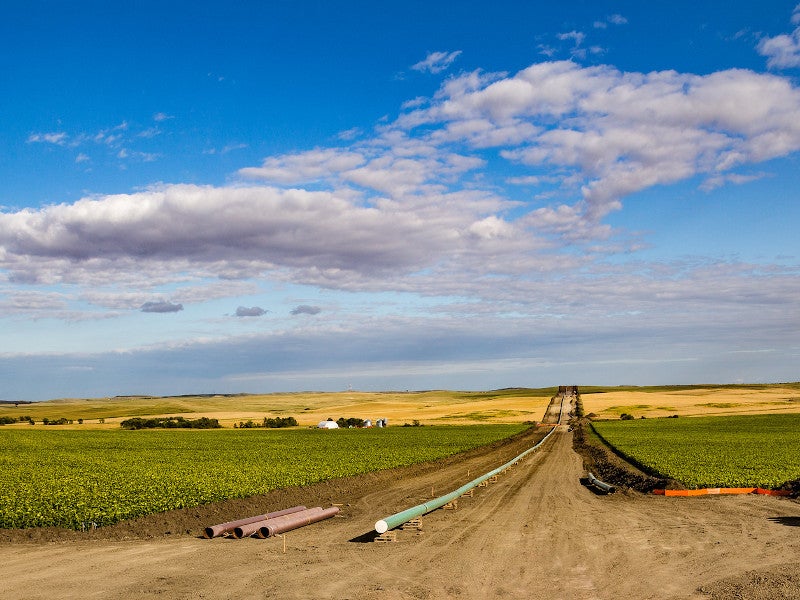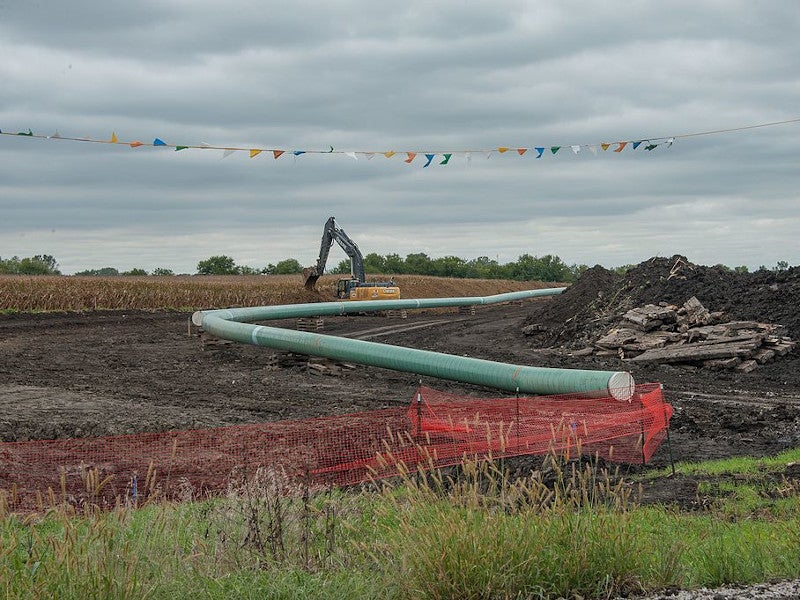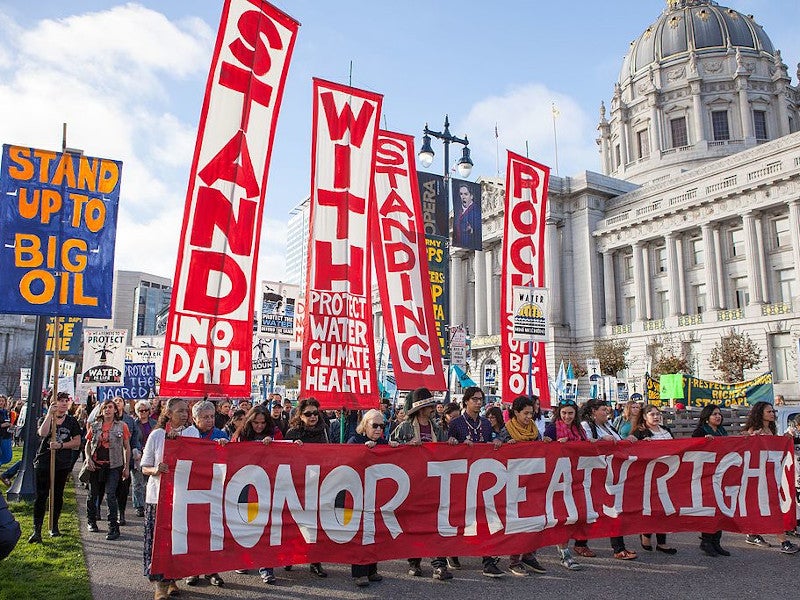The Dakota Access Pipeline, also known as the Bakken Oil Pipeline, is a controversial 1,886km-long underground pipeline in the US to transport light, sweet crude oil from the Bakken and Three Forks shale formations in North Dakota through South Dakota and Iowa to an oil terminal near Patoka in Illinois.
The interstate crude pipeline was built with an estimated investment of £3bn ($3.8bn) and has been operating since June 2017.
The pipeline is owned and operated by Dakota Access, a joint venture between Energy Transfer Partners (38.25%), MarEn Bakken Company holds (36.75%) and Phillips 66 (25%). MarEn Bakken is a joint-venture between Marathon Petroleum and Enbridge Energy Partners.
The current operating capacity of the Dakota Access pipeline is 570,000 barrels of oil per day (bopd) which the project partners seek to almost double to 1.1 million barrels per day(Mbopd) by building additional pump stations along the route.
Although the North Dakota, South Dakota and the Iowa regulators approved the expanded capacity of the pipeline in the first quarter of 2020, the proposed expansion plan has triggered stiff opposition from local communities and the environmental groups.
Dakota Access Pipeline route and design details
The Dakota Access pipeline originates near Stanley in North Dakota and runs through South Dakota, Iowa before terminating at the Patoka oil terminal in Illinois.
The underground pipeline mostly comprises 30in-diametre pipes while certain sections are of 12in, 20in and 24in- diameters.
The mainline section of the pipeline receives oil from six terminals located in Mountrail, Williams and McKenzie counties in North Dakota through approximately 238km supply lines. The mainline runs for approximately 338km in North Dakota, 438km in South Dakota, and 558km in Iowa. The length of the pipeline in Illinois is approximately 285km.
The Patoka terminal consists of 80 storage tanks with a combined capacity of over 19 million barrels. The Patoka terminal is connected to multiple pipelines to transport crude to the states in the Midwest and the Gulf Coast of the US.
Dakota Access Pipeline optimisation
The pipeline partners are planning to increase the capacity of the pipeline from 570,000 bpd of crude oil to 1.1Mbpd by building three new pump stations in North Dakota, South Dakota, and Illinois, as well as through modification to the existing pump stations along the route.
The pipeline’s capacity can be doubled by creating additional horsepower without any construction of the additional pipeline.
Contractors involved
Precision Pipeline and Michels Pipeline Construction were involved in the construction of the Dakota Access Pipeline.
Legal challenges
The Dakota Access Pipeline project received clearance from the US Army Corps of Engineers (USACE) in July 2016.
The Standing Rock Sioux tribe approached the court in the same year alleging the risk of the oil spill in the Lake Oahe of the Missouri River which is the main water source for the Standing Rock Reservation.
The Obama administration denied permits for the pipeline to cross the Missouri river and ordered a new environmental impact assessment (EIA) to analyse alternate routes of the pipeline in December 2016.
However, immediately after Donald Trump assumed office as president of the US in January 2017, the federal government signed an executive order to advance the construction of the pipeline.
The construction of the pipeline segment beneath the Lake Oahe was completed in March 2017 and the pipeline became fully operational in June 2017.
The Standing Rock Sioux tribe, however, continued its fight against the pipeline’s permits.
In March 2020, a federal court in the District of Columbia ruled against the permits and ordered the USACE to conduct a comprehensive environmental review for the pipeline, citing the Army Corps’ latest environmental impact statement (EIS) for the pipeline violated the National Environmental Policy Act (NEPA).
Dakota Access made its own case to the court in April 2020 that the revocation of pipeline’s permits will severely affect multiple stakeholders, while the USACE pleaded the court in the same moth to keep the permits in effect while the agency undertakes corrective measures.





